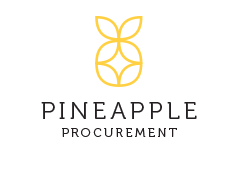Shipping Container Delays – Is it time to consider sourcing domestically?
The Port of Los Angeles is the busiest container port in the Western Hemisphere due to its proximity to Asia. It has been dealing with a record number of shipping containers arriving since late last year. The port processed 799,315 containers, 20-foot equivalent units (TEUs), in February, a 47% jump compared with February 2020. At any one time, there may be up to 30 vessels queueing to unload and the wait is often a few days. It is a similar picture at most ports in the US. One-third of all imports into the US comes via California ports.
“The world’s biggest makers of shipping containers are scrambling to meet a surge in demand for the metal boxes that shuttle some 90% of the goods around the global economy”. Bloomberg, April 2021
Imports for the hospitality sector
Every hospitality project is different from the last one. Most furniture, fixtures, and equipment (FF&E) are made to order and are not off-the-shelf purchases. This is the case whether the project is new construction with full FF&E and Operating Supplies and Equipment (OS&E) or a scheduled property improvement plan (PIP). Most projects include imported items. The most popular sources of high-volume furnishings for the hospitality sector are countries in Asia: China, Vietnam, Malaysia and Indonesia. There are more than 50,000 furniture manufacturers in China alone. Shipping delays, which are due to a combination of reasons, impact project planning and budgets. Lead times are subject to change continuously. The congestion at ports is easing but it will take time to improve. To manage our projects better we need to understand the constraints and consider alternatives.
Regulations on global sourcing
Hotel furnishings, both functional and decorative, are usually made from many materials, including metals, plastics, and wood. Some indigenous woods are in short supply due to concerns about deforestation and sustainability. Certain imported wood and bamboo furniture and handicraft products are regulated via import permits by the Animal and Plant Health Inspection Service (APHIS). They have an approved list of suppliers and require proof of fumigation and heat treatment of products. Stating the country of origin, in English, is mandatory for all products imported and sold in the US, including wood products. The country of origin must be included in declaration documents and on labels.
Sourcing FF&E domestically
Lead times for delivery of imported items are growing. 16-20+ weeks from order to delivery is not unusual. These problems with imports are causing a rethink and we often get asked: should we consider sourcing goods domestically? Ocean freight costs from the main source, China, have been steadily increasing. Chinese goods attract import tariffs of between 10% and 30% of the product cost (this can change at any time). Although many vendors do help absorb a portion of the tariffs, add to this the fees for freight and duties and local sourcing becomes more attractive in some cases.
Prices of imported items have traditionally been cheaper due to lower costs of production than in the USA, especially because of labor rates. The gap is narrowing. However, the cost of locally manufactured furniture has been affected by the rise in steel and timber costs and other raw materials. Prices for iron and steel products increased around 15 percent in the last year. There is also a severe shortage of foam and other poly/pad supplies to the furniture industry. The major benefit of sourcing domestically is the shorter lead time along with a growing number of top-quality producers. Some smaller manufacturers may not have the capacity to produce the required quantities.
A project’s success will probably depend on a combination of imported and locally sourced items.
Trends in furniture, fixtures, and equipment (FF&E)
More and more guests are concerned about sustainable sourcing at the hotels they stay in as much as they do in their own homes.
Visitors are looking for a special and unique experience when travelling to hotels and resorts. Locally sourced products can support this goal.
Socially aware guests need to know that labor has not been exploited or illegal raw materials used to provide their comfort. They expect transparency.
What to do to mitigate project delays
Plan ahead. Pineapple has been able to reduce costs and add value by joining project teams early on to help develop smart procurement strategies.
Every project has a budget and goals. Sticking to a realistic plan and schedule means that budget overruns are avoided
Lead times for imports are constantly changing – have an alternative Plan B for items that can be sourced with the US.
Have a contingency plan for imports that arrive damaged.
To learn more about how Pineapple Procurement can help you select FF&E and OS&E suppliers that will align with your project budget and schedule, please contact us.
Email: jackie@pineappleprocurement.com
Phone: 310-734-6373
